 W
WThe 1920 blind march was a protest march to London of 250 blind people from across the United Kingdom. It was organised by the National League of the Blind (NLB) to protest poor working conditions and poverty experienced by blind people. In particular the NLB raised concerns over the conditions in workshops run to provide employment to the visually impaired by various charities. The marchers assembled at Newport, Manchester and Leeds on 5 April and marched to London, assembling at Trafalgar Square on 25 April. They were greeted by a crowd of 10,000 who listened to speeches from Herbert Morrison and trade union leaders. The march leaders met with prime minister David Lloyd George on 30 April, who made few promises apart from to pay for the marchers' rail tickets home. A subsequent Blind Persons Act 1920, the first disability-specific legislation in the world, compelled local authorities to ensure the welfare of blind persons and reduced the pension age for blind men. The march served as inspiration for the more famous 1936 Jarrow March against unemployment, in which the NLB also participated.
 W
WAcute visual loss is a rapid loss of the ability to see. It is caused by many ocular conditions like retinal detachment, glaucoma, macular degeneration, and giant cell arteritis, etc.
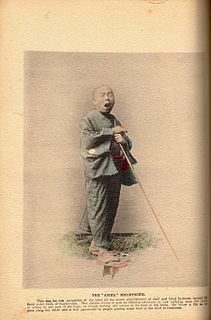 W
WAnma refers to both a practice of traditional Japanese massage and to practitioners of that art. Modern shiatsu is largely derived from anma.
 W
WArgus retinal prosthesis, also known as a bionic eye, is an electronic retinal implant manufactured by the American company Second Sight Medical Products. It is used as a visual prosthesis to improve the vision of people with severe cases of retinitis pigmentosa. The Argus II version of the system was approved for marketing in the European Union in March 2011, and it received approval in the US in February 2013 under a humanitarian device exemption. The Argus II system costs about US$150,000, excluding the cost of the implantation surgery and training to learn to use the device.
 W
WBelmont Park is a public park in Exeter, England. Opened to the public in 1886 as a children's play area, it was subsequently enlarged for the use of the general public.
 W
WBinasal hemianopsia is the medical description of a type of partial blindness where vision is missing in the inner half of both the right and left visual field. It is associated with certain lesions of the eye and of the central nervous system, such as congenital hydrocephalus.
 W
WBitemporal hemianopsia, is the medical description of a type of partial blindness where vision is missing in the outer half of both the right and left visual field. It is usually associated with lesions of the optic chiasm, the area where the optic nerves from the right and left eyes cross near the pituitary gland.
 W
WThe parable of the blind men and an elephant originated in the ancient Indian subcontinent, from where it has been widely diffused. It is a story of a group of blind men who have never come across an elephant before and who learn and imagine what the elephant is like by touching it. Each blind man feels a different part of the elephant's body, but only one part, such as the side or the tusk. They then describe the elephant based on their limited experience and their descriptions of the elephant are different from each other. In some versions, they come to suspect that the other person is dishonest and they come to blows. The moral of the parable is that humans have a tendency to claim absolute truth based on their limited, subjective experience as they ignore other people's limited, subjective experiences which may be equally true.
 W
WA blindfold is a garment, usually of cloth, tied to one's head to cover the eyes to disable the wearer's sight. While a properly fitted blindfold prevents sight even if the eyes are open, a poorly tied or trick blindfold may let the wearer see around or even through the blindfold.
 W
WBlinding is a type of physical punishment which results in complete or nearly complete loss of vision. It was used as an act of revenge and torture. The punishment has been used since Antiquity; Greek mythology makes several references to blinding as divine punishment, which reflects human practice.
 W
WA Braille trail is a walking path or hiking trail that is designed to be accessible by those who are visually impaired. In particular, trails are often delineated with ropes or other physical barriers, and signage and other markers have audio or are written in Braille.
 W
WBritish Columbia v British Columbia , [1999] 3 S.C.R. 868, known as the Grismer Estate case, is a leading Supreme Court of Canada decision on human rights law. The Court held that the British Columbia Superintendent of Motor Vehicles was in violation of the provincial Human Rights Code for cancelling the driver's licence of Terry Grismer because he had a visual disability.
 W
WBuphthalmos is enlargement of the eyeball and is most commonly seen in infants and young children. It is sometimes referred to as buphthalmia. It usually appears in the newborn period or the first 3 months of life. and in most cases indicates the presence of congenital (infantile) glaucoma, which is a disorder in which elevated pressures within the eye lead to structural eye damage and vision loss.
 W
WA cataract is a cloudy area in the lens of the eye that leads to a decrease in vision. Cataracts often develop slowly and can affect one or both eyes. Symptoms may include faded colors, blurry or double vision, halos around light, trouble with bright lights, and trouble seeing at night. This may result in trouble driving, reading, or recognizing faces. Poor vision caused by cataracts may also result in an increased risk of falling and depression. Cataracts cause half of all cases of blindness and 33% of visual impairment worldwide.
 W
WA cecogram, also known as literature for the blind, is a letter or a parcel that contains documents or items intended for visually impaired persons. Cecograms can be sent or received by such persons, as well as by organisations that provide assistance to the visually impaired. Cecograms are either partially or entirely exempt from postage.
 W
WChildhood blindness is an important cause contributing to the burden of blindness. Blindness in children can be defined as a visual acuity of <3/60 in the eye with better vision of a child under 16 years of age. This generally means that the child cannot see something 10 feet away, that another child could see if it was 200 feet away.
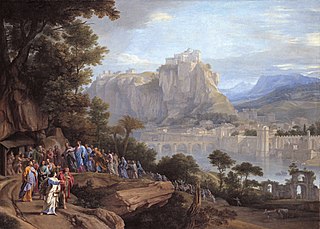 W
WChrist Healing the Blind is a c. 1655–60 oil painting on canvas by Philippe de Champaigne.
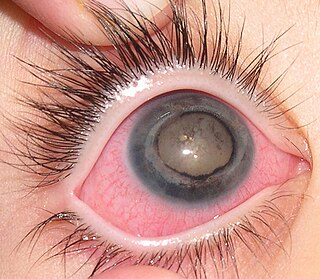 W
WCoats' disease, is a rare congenital, nonhereditary eye disorder, causing full or partial blindness, characterized by abnormal development of blood vessels behind the retina. Coats' disease can also fall under glaucoma.
 W
WCongenital cataracts refers to a lens opacity which is present at birth. Congenital cataracts cover a broad spectrum of severity: whereas some lens opacities do not progress and are visually insignificant, others can produce profound visual impairment.
 W
WThe theme of blindness has been explored by many different cultures throughout history, with blind characters appearing in stories from ancient Greek mythology and Judeo-Christian religious texts. In the modern era, blindness has featured in numerous works of literature and poetry by authors such as William Shakespeare, William Blake, and H. G. Wells, and has also been a recurring trope in film and other visual media.
 W
WDarkness, the direct opposite of lightness, is defined as a lack of illumination, an absence of visible light, or a surface that absorbs light, such as black or brown.
 W
WDiabetic retinopathy, also known as diabetic eye disease (DED), is a medical condition in which damage occurs to the retina due to diabetes mellitus. It is a leading cause of blindness in developed countries.
 W
WFamilial exudative vitreoretinopathy is a genetic disorder affecting the growth and development of blood vessels in the retina of the eye. This disease can lead to visual impairment and sometimes complete blindness in one or both eyes. FEVR is characterized by exudative leakage and hemorrhage of the blood vessels in the retina, along with incomplete vascularization of the peripheral retina. The disease process can lead to retinal folds, tears, and detachments.
 W
WGlaucoma is a group of eye diseases which result in damage to the optic nerve and cause vision loss. The most common type is open-angle glaucoma, in which the drainage angle for fluid within the eye remains open, with less common types including closed-angle glaucoma and normal-tension glaucoma. Open-angle glaucoma develops slowly over time and there is no pain. Peripheral vision may begin to decrease, followed by central vision, resulting in blindness if not treated. Closed-angle glaucoma can present gradually or suddenly. The sudden presentation may involve severe eye pain, blurred vision, mid-dilated pupil, redness of the eye, and nausea. Vision loss from glaucoma, once it has occurred, is permanent. Eyes affected by glaucoma are referred to as being glaucomatous.
 W
WGuide dogs are assistance dogs trained to lead blind or visually impaired people around obstacles. Although dogs can be trained to navigate various obstacles, they are red–green colour blind and incapable of interpreting street signs. The human does the directing, based on skills acquired through previous mobility training. The handler might be likened to an aircraft's navigator, who must know how to get from one place to another, and the dog is the pilot, who gets them there safely. In several countries guide dogs, along with most other service and hearing dogs, are exempt from regulations against the presence of animals in places such as restaurants and public transportation.
 W
WA guide horse is an alternative mobility option for blind people who do not wish to or cannot use a guide dog.
 W
WEach of the three Synoptic Gospels tells of Jesus healing the blind near Jericho, as he passed through that town, shortly before his passion.
 W
WHemianopsia, or hemianopia, is a loss of vision or blindness (anopsia) in half the visual field, usually on one side of the vertical midline. The most common causes of this damage are stroke, brain tumor, and trauma.
 W
WHemianopsia, or hemianopia, is a visual field loss on the left or right side of the vertical midline. It can affect one eye but usually affects both eyes.
 W
WLarge-print refers to the formatting of a book or other text document in which the typeface are considerably larger than usual to accommodate people who have low vision. Frequently the medium is also increased in size to accommodate the larger text. Special-needs libraries and many public libraries will stock large-print versions of books, along with versions written in Braille.
 W
WA maculopathy is any pathological condition of the macula, an area at the centre of the retina that is associated with highly sensitive, accurate vision.
 W
WMolyneux's problem is a thought experiment in philosophy concerning immediate recovery from blindness. It was first formulated by William Molyneux, and notably referred to in John Locke's An Essay Concerning Human Understanding (1689). The problem can be stated in brief, "if a man born blind can feel the differences between shapes such as spheres and cubes, could he, if given the ability to see, distinguish those objects by sight alone, in reference to the tactile schemata he already possessed?"
 W
WNance–Horan syndrome is a rare X-linked dominant syndrome characterized by congenital cataracts leading to profound vision loss, characteristic dysmorphic features, and dental anomalies. Microcornea, microphthalmia, and mild or moderate mental retardation may accompany these features. Heterozygous females often manifest similarly but with less severe features than affected males.
 W
WNational Federation of the Blind v. Target Corporation, 452 F. Supp. 2d 946, was a class action lawsuit in the United States that was filed on February 7, 2006, in the Superior Court of California for the County of Alameda, and subsequently moved to federal court. The case challenged whether the Americans with Disabilities Act of 1990, specifically Title III's provisions prohibiting discrimination by "places of public accommodation", apply to websites and/or the Internet, or are restricted to physical places.
 W
WNyctalopia, also called night-blindness, is a condition making it difficult or impossible to see in relatively low light. It is a symptom of several eye diseases. Night blindness may exist from birth, or be caused by injury or malnutrition. It can be described as insufficient adaptation to darkness.
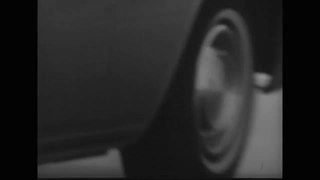 W
WOrientation and Mobility, or O&M, is a profession which focuses on instructing individuals who are blind or visually impaired with safe and effective travel through their environment. Individual O&M specialists can work for schools, government agencies or work as private contractors. The Academy for Certification of Vision Rehabilitation and Education Professionals (ACVREP) offers certification for vision rehabilitation professionals in the United States.
 W
WArnall Patz was an American medical doctor and research professor at Johns Hopkins University. In the early 1950s, Patz discovered that oxygen therapy was the cause of an epidemic of blindness among some 10,000 premature babies. Following his discovery, there was a sixty percent reduction in childhood blindness in the United States. He also conducted pioneering research in the 1960s into the use of lasers in the treatment of retinal disorders. He received the Lasker Award in 1956 for his research into the causes and prevention of blindness and the Presidential Medal of Freedom in 2004 for his lifetime of work in the field of ophthalmology.
 W
WPrimary juvenile glaucoma is glaucoma that develops due to ocular hypertension and is evident either at birth or within the first few years of life. It is caused due to abnormalities in the anterior chamber angle development that obstruct aqueous outflow in the absence of systemic anomalies or other ocular malformation.
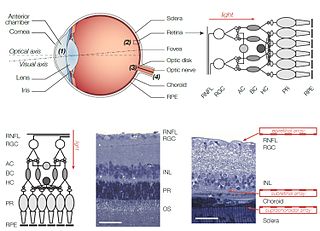 W
WRetinal prostheses for restoration of sight to patients blinded by retinal degeneration are being developed by a number of private companies and research institutions worldwide. The system is meant to partially restore useful vision to people who have lost their photoreceptors due to retinal diseases such as retinitis pigmentosa (RP) or age-related macular degeneration (AMD). Three types of retinal implants are currently in clinical trials: epiretinal, subretinal, and suprachoroidal. Retinal implants introduce visual information into the retina by electrically stimulating the surviving retinal neurons. So far, elicited percepts had rather low resolution, and may be suitable for light perception and recognition of simple objects.
 W
WRetinal regeneration refers to the restoration of vision in vertebrates that have suffered retinal lesions or retinal degeneration.
 W
WRetinitis pigmentosa (RP) is a genetic disorder of the eyes that causes loss of vision. Symptoms include trouble seeing at night and decreased peripheral vision. As peripheral vision worsens, people may experience "tunnel vision". Complete blindness is uncommon. Onset of symptoms is generally gradual and often in childhood.
 W
WTrachoma is an infectious disease caused by bacterium Chlamydia trachomatis. The infection causes a roughening of the inner surface of the eyelids. This roughening can lead to pain in the eyes, breakdown of the outer surface or cornea of the eyes, and eventual blindness. Untreated, repeated trachoma infections can result in a form of permanent blindness when the eyelids turn inward.
 W
WTunnel vision is the loss of peripheral vision with retention of central vision, resulting in a constricted circular tunnel-like field of vision.
 W
WVitamin A deficiency (VAD) or hypovitaminosis A is a lack of vitamin A in blood and tissues. It is common in poorer countries, especially among children and women of reproductive age, but is rarely seen in more developed countries. Nyctalopia is one of the first signs of VAD. Xerophthalmia, keratomalacia, and complete blindness can also occur since vitamin A has a major role in phototransduction. The three forms of vitamin A include retinols, beta-carotenes, and provitamin A carotenoids.
 W
WVitelliform macular dystrophy, is an irregular autosomal dominant eye disorder which can cause progressive vision loss. This disorder affects the retina, specifically cells in a small area near the center of the retina called the macula. The macula is responsible for sharp central vision, which is needed for detailed tasks such as reading, driving, and recognizing faces. The condition is characterized by yellow, slightly elevated, round structures similar to the yolk of an egg.